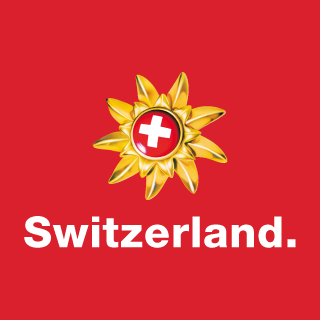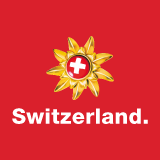On the pilgrimage route to Mariastein Monastery Father Ludwig talks about this power spot and the importance of pilgrimage.
Intro
Relaxation, power spots and digital detox are three concepts that have become increasingly important in recent years. Our need for rest and relaxation has increased, and more and more people are embarking on a pilgrimage. Situated in the Aargau Solothurn Region, Mariastein Monastery is a popular place of pilgrimage and thus a destination for many pilgrims. Father Ludwig outlines what pilgrimage means and explains that pilgrimages can be for anyone.
The Aargau Solothurn Region
Untouched landscapes, wellness retreats of all sizes, baroque jewels that are well known far beyond the country’s borders and historic buildings – all of this and more can be found in the holiday region of Aargau Solothurn.
Say goodbye to pressure and stress!
Do you find the phone ringing incessantly, one appointment after the next with no time to take a quick breather? Day-to-day life is often full of stress, time pressures and sensory overload, which can lead to feelings of exhaustion and dissatisfaction. There is a growing need for relaxation and moments of tranquillity. The chance to escape from the fast-paced world and hectic day-to-day life is vital.
We are always rushing from A to B, which explains our need for peace and quiet away from the daily hustle and bustle. Pilgrimage is one way to calm the mind.
Pilgrimage, and particularly pilgrimage to a sacred place like a monastery, can be a way to slow down. You distance yourself from the distractions of day-to-day life, enjoy nature and focus on yourself and your personal development. Pilgrimage offers the opportunity to find inner peace and balance. But what does pilgrimage mean exactly?
Pilgrimage is not something that has to be learned. What it takes is the will to make your way to a certain place on foot and at your own pace. All you need are comfortable shoes, weather-appropriate clothing, maps of the route, food and water – and your journey can begin. Pilgrimage is not about speed, and the route does not necessarily have to follow any official pilgrimage route.
On the Via Surprise heading for Mariastein Monastery
If you’d prefer to follow a signposted route, the Via Surprise is a suitable pilgrimage route. The circular route through the Solothurn and Basel-Landschaft Jura lets pilgrims feel the power and beauty of nature. The route leads through unknown valleys and over small peaks with impressive views. The tranquillity of the forests and Jura hills allows you to take a deep breath and recharge your batteries.
Focus on Mariastein, our destination for the current stage of the pilgrimage route
The destination on the fifth stage of our pilgrimage is a very special place: Mariastein in the canton of Solothurn, Mariastein Monastery to be precise. From Mätzerlechrüz, the highest point of this stage, the route leads downhill along a forest trail. Then past Rotberg Castle, now a youth hostel, with the pilgrims completing the last few metres of the pilgrimage in the shadow of the monastery walls. They soon find themselves standing in the middle of the monastery square.
This is Mariastein Monastery
With its late-Gothic architecture, and nestled in picturesque surroundings, Mariastein Monastery is a place of inspiration. After Einsiedeln, the Benedictine monastery is probably the most well known place of pilgrimage in Switzerland. Up to 250,000 people have been making pilgrimage to Mariastein every year for over 600 years. At the heart of the monastery, and the destination of the pilgrimage, is the Chapel of Grace. A legend has grown up around the origin of the chapel hidden in the rock.
A place of hope.
According to legend, a little shepherd boy and his mother took a midday rest in the cool shade of a cave. While the mother slept, the boy slipped away and fell off a cliff. He survived the fall only because the Blessed Virgin Mary came to his aid. As a gesture of gratitude for the rescue, the shepherd boy’s father built a small chapel in the cave. First mentioned in historic documents in 1434, it has developed over the centuries into an atmospheric place of worship. Today, the Chapel of Grace is accessed via a staircase with 59 steps that have been carved into the rock.
Father Ludwig Ziegerer, Pilgrimage Director
The monk has been living behind the monastery walls for over 38 years. But that doesn’t mean his day-to-day life is at all boring. As a trained teacher, today he is responsible for the pilgrimage and can serve both God and man in the Benedictine monastery. Father Ludwig also finds great joy in looking after the flowers at the Mariastein pilgrimage site.
Mariastein has become a place of hope and promise. People looking for support in their private, social or business lives are never abandoned. The smiling Madonna, the Mother of Consolation, gives people courage, hope, strength and aid. Many people visit the church and the Chapel of Grace. Others are more interested in the art and culture. And then there are those who come to enjoy the natural surroundings and the vastness of the landscape.
The monastery church
The first thing anyone visiting the monastery sees is the monastery church. The church square was designed by artist Ludwig Stocker. There are seven marble columns on either side. On the left side they symbolise the seven gifts of the Holy Spirit, while on the right side they recall the seven sorrows and seven joys of Mary, the Mother of God. On entering the church through the large entrance doors, visitors are greeted by an impressive sight: the paintings by Lothar Albert following the restoration of the baroque church between 1932 and 1934 are fascinating. Two of the ceiling paintings depict the legend of the shepherd boy’s rescue.
A cockerel and crucifix combined?
In Switzerland, it is common for a cockerel on the steeple to indicate a Reformed Protestant church, while a cross indicates a Catholic church. No-one has a definitive answer as to why both are found on the monastery church of Mariastein. The cockerel here simply acts as a weather vane, while the monastery itself is Catholic.
From a pilgrim hostel to a comfortable monastery hotel
Because of the constantly growing number of pilgrims, a hostel was built not far from the monastery in 1648. Originally a simple pilgrim hostel, the building has developed over the years into today’s comfortable Klosterhotel Kreuz. Nestled in the picturesque landscape, the hotel offers its guests relaxing tranquillity. After a strenuous day on the pilgrimage trails, the hikers can switch off and relax in a peaceful and comfortable room. This is the ideal place to get away from it all.
Whether their reason for making a pilgrimage to Mariastein is to search for answers to the big questions about the meaning of life or simply a sporting challenge, all pilgrims have one thing in common, as Father Ludwig explains: “They leave with a feeling of strength and a great sense of gratitude.”
Power spots in the Aargau Solothurn Region
Monastic sites, chapels, pilgrimage routes and churches – power spots in Aargau and the canton of Solothurn are many and varied. Whether in the heart of the great outdoors or in the city, these places radiate a special energy and offer relaxation for the soul.


